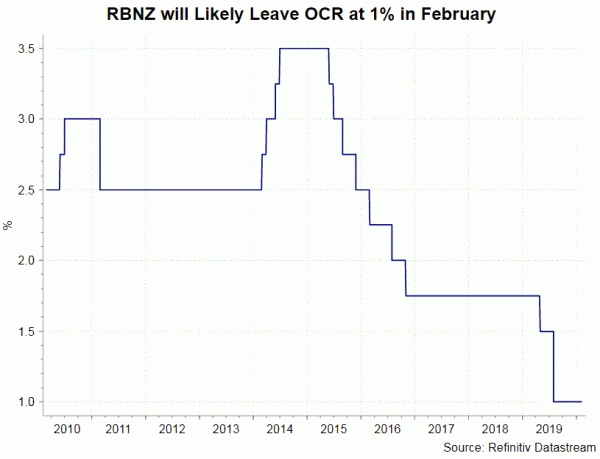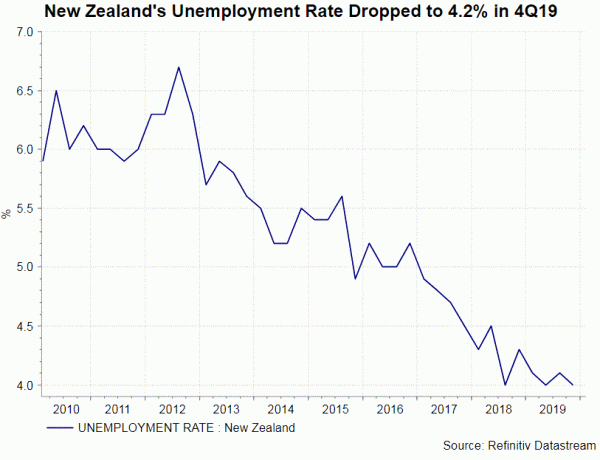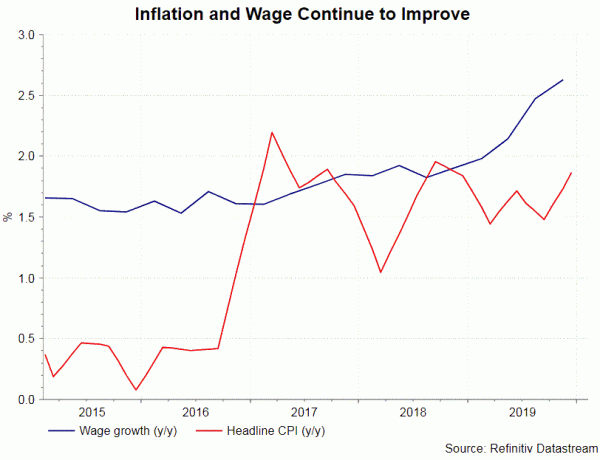RBNZ is widely expected to leave the OCR unchanged at 1%. Upbeat economic developments since the November meeting should warrant removal of easing bias in February. However, outbreak of coronavirus from China suggests that risks to global growth are greatly skewed to the downside. This should cause the members to retain a cautious tone next week.
New Zealand’s economy has shown improvements since the last meeting. The housing market is gathering momentum. QV’s House Price Index shows that average residential property values gained +4.4% y/y in January. Elsewhere, the unemployment rate dropped -0.2 percentage point to 4% in 4Q19, beating consensus of, and 3Q’s, 4.2%. The labor cost index steadied at +0.6% q/q. From a year ago, the index added +0.1 percentage point to 2.4%. On inflation, headline CPI improved to +1.9% y/y in 4Q19, from +1.5% in the prior quarter. While much of the improvement came from temporary factors, there are signs showing that core inflation is increasing. Meanwhile, the 2-year forecast points to +1.93% in 1Q20, higher than +1.8% a quarter ago. GDP growth in 3Q19 came in at +0.7% q/q, much stronger than the RBNZ’s forecast of +0.3%.

 Despite the upbeat indicators, policymakers are expected to remain cautious, in light of the outbreak of coronavirus. The epidemic has caused disruption on travel and transportation, i.e.: foreigners are banned from travelling to New Zealand from China. Meanwhile, forestry exports to China have been suspended. Since the economic impacts of the epidemic are uncertain, depending on the severity and duration, it is difficult for the central bank to price them in their projections.
Despite the upbeat indicators, policymakers are expected to remain cautious, in light of the outbreak of coronavirus. The epidemic has caused disruption on travel and transportation, i.e.: foreigners are banned from travelling to New Zealand from China. Meanwhile, forestry exports to China have been suspended. Since the economic impacts of the epidemic are uncertain, depending on the severity and duration, it is difficult for the central bank to price them in their projections.
Besides monetary policy, fiscal stimulus has also been announced to stimulate the economy. The Government announced an additional NZ$12B in infrastructure spending in December. Additionally, the government’s revised debt target range of 15-25 percent of GDP leaves room for further fiscal spending to support the economy.













